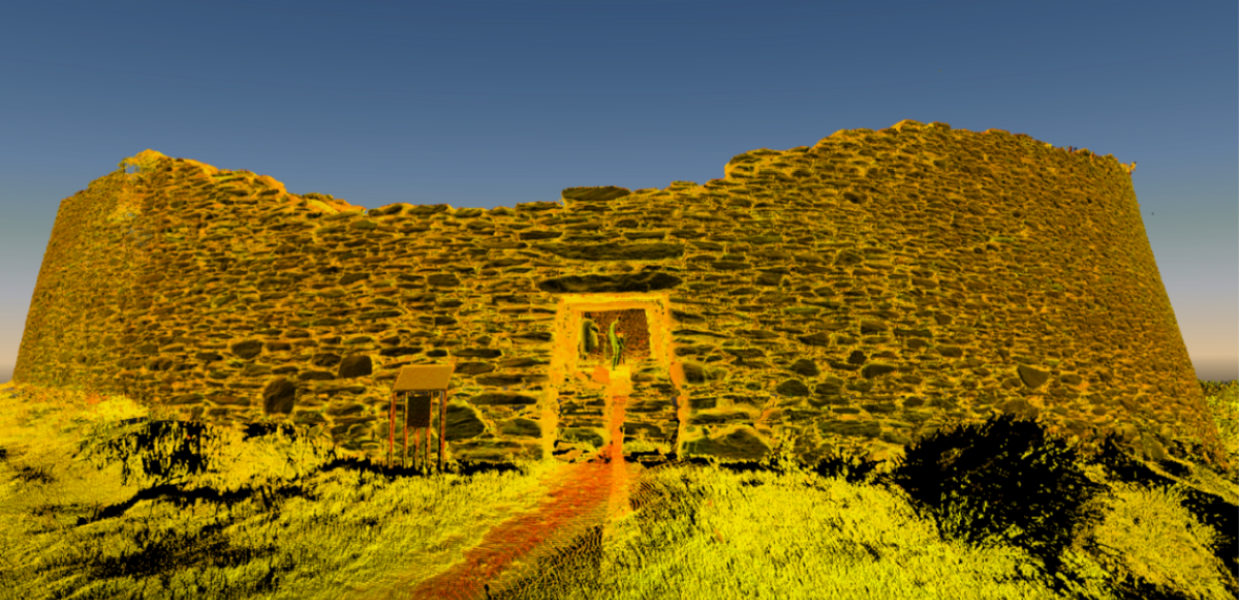3D documentation and reuse of data within the cultural heritage sector in Ireland
In an abridged post from the online journal EuropeanaTech Insight, we explore how data from the 3D-ICONS project in Ireland has continued to be used even after the end of the project, by Anthony Corns and Robert Shaw from The Discovery Programme, Centre for Archaeology and Innovation in Ireland.

- Title:
- View of the point cloud data collected at Staigue Stone Fortt
- Creator:
- Kerry Gaming Solution for Lightweight Modelling
- Copyright:
- CC BY-NC
Over the past decade, there has been a growing recognition that 3D digital documentation methods can play an important role in the preservation of cultural heritage structures and objects. This documentation has enabled experts including conservation scientists, archaeologists and historians to gain access to high-resolution data, which in turn allows for the identification of new features and subtleties which are not easily recognised by the naked eye.
The 3D Icons Project
From 2012-2015, the Discovery Programme participated in the 3D-ICONS Project, a pilot project funded under the European Commission’s ICT Policy, which established a complete pipeline for the production of 3D replicas of archaeological monuments, historic buildings and artefacts to contribute this content and the associated metadata to Europeana.
During the project, a selection of representative cultural monuments were recorded in Ireland, including the UNESCO world heritage sites of Brú na Bóinne and Skellig Michael. Many of these sites were National Monuments conserved and maintained by the National Monuments Service of Ireland, and hugely popular with tourists and visitors.
How the data is being used
The 3D-ICONS project ended in January 2015, but the outputs and legacies of the project are far from over. In addition to the 230 Irish 3D models made available online during the project, the amount of 3D content being created by the Discovery Programme has now reached 400 sites, monuments and artefacts available both through Sketch Fab and Europeana. We have seen reuse of data within several diverse sectors and audiences including:
-
Education: the 3D-ICONS website is being used as a classroom resource by primary and secondary teachers in local schools including the teaching of History of Art at Leaving Certificate level.
-
Tourism: Ireland’s attraction to tourists is strongly associated with its wealth of cultural heritage sites. By repurposing the data collected within the 3D-ICONS project and adding additional content, models and visualisations the Office of Public Works (OPW), who manage many sites, has delivered a richer and increasingly interactive tourist experience.
-
Creative sectors: Through the identification of 3D content through portals such as Europeana and Sketchfab, the Discovery Programme has commercially licensed several 3D datasets to a range of creative sectors for reuse. These include film production companies who have used the 3D models in the pre-production process, for efficient planning at filming locations and post-production in the creation of visual effects.
Recording finite cultural heritage objects in high-resolution 3D data does not only benefit the understanding and management of these resources by professional sectors. Ensuring that this data can be promoted and reused by a wide range of sectors benefits both the wider public in enabling access to their shared heritage and allows the authentic exploitation of our cultural heritage by several industries, as well as the potential for this to partially fund some activities within the cultural heritage sector.

